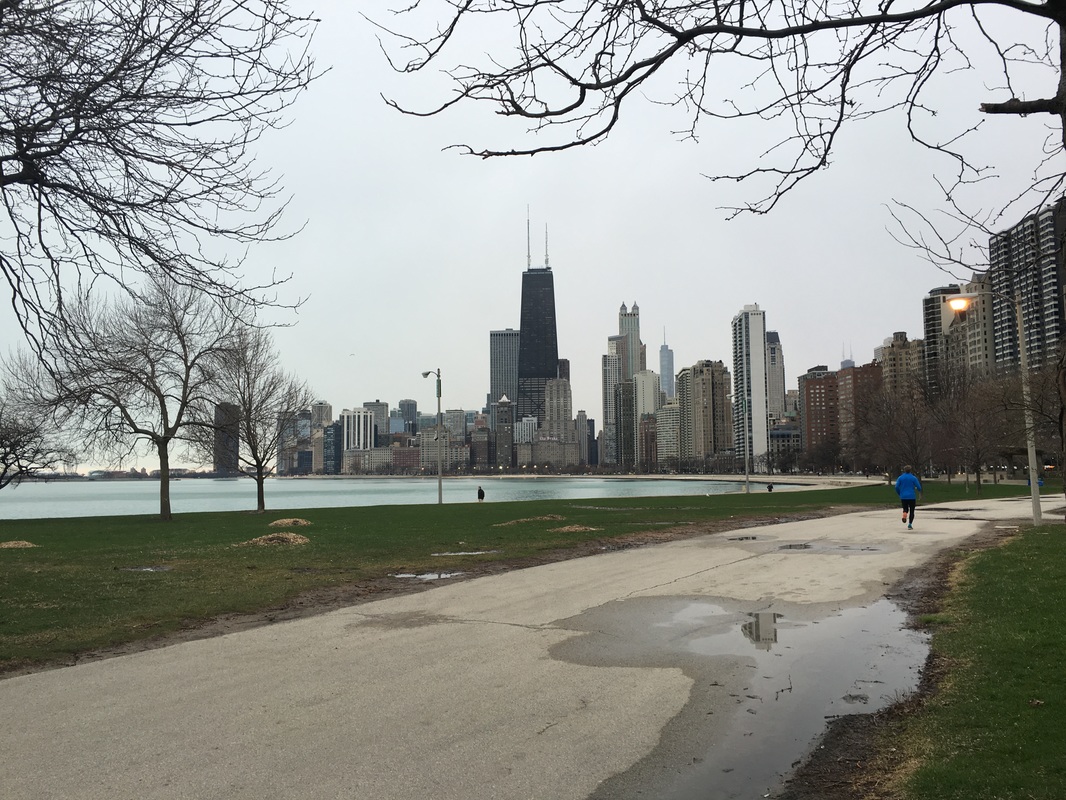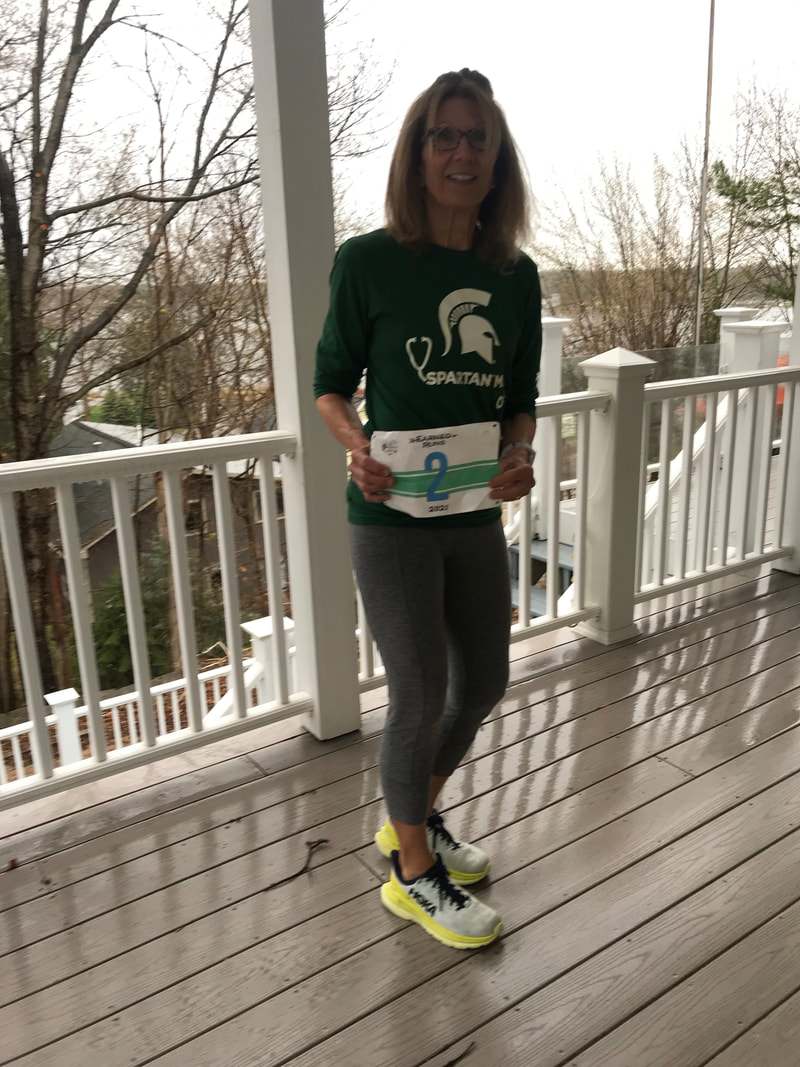BLOG
|
|
RUCKING IS ONE OF THE LATEST FITNESS CHALLENGES that seems especially to appeal to former military and men according to a Men’s Health Magazine article “The Fitness Trend Men Everywhere Can’t Get Enough Of” by Michael Easter. What is rucking? It’s walking or marching with a weighted backpack. More properly in the military world, the backpack is referred to as a rucksack, and from this comes the descriptive verb for this activity: rucking. In the military the added weight comes from weapons and equipment that is necessary to the mission, up to 200 pounds. In the sport, it could be plain old bricks or a specially made plate, and as little as 10 pounds or up to 30 pounds in weight.
I first learned of ruck events when I was researching walking competitions. i thought it might be a workout and racing alternative to plain running. It's funny how once you become aware of something new, it seems to be everywhere after that time! I saw an advertisement for a rucking event on a billboard the very next day, while traveling on the train. Women are also joining in the fun according to the online information, images, and products on the website of “GORUCK” (goruck.com), a company that makes rucking-specific equipment and leads “team-building endurance events” for rucking enthusiasts. There are GORUCK events that might attract women to the sport by allowing lighter loads (light, heavy, and challenge). MADE-IN-THE-USA rucksacks manufactured by this company not only come in military hues of black, brown, green, gray, and red, but are also sold in a “girls” pink color version with curved straps. GORUCK’s founder, Jason McCarthy, indicates on the website that his experiences serving with the 10th Special Forces Group (2006-08) form the basis for challenges and training offered by his company. Each challenge “class” is headed by a “Special Forces Cadre” leader tasked with building class members into a team, by testing and pushing their limits. “Always a team event, never a race” is the GORUCK promise. SPEARHEAD is a grassroots organization that also offers training programs for rucking, and more. It was begun in 2013, in Charlotte NC, with the purpose of helping a group of participants prepare “military-style” for GORUCK events. According to it’s website, the workout group initially met once a week, then more often, and eventually transformed to become TEAM SPEARHEAD. This new TEAM now has a stated mission to bridge “ the gap between civilians and veterans through shared experiences and team building”, which includes training, rucking, and socializing together, and sometimes taking time to share “war stories” and beer. The organization’s stated focus is on “honoring the US Military Service members and veterans" through these and other philanthropic activities. Stew Smith in Military.com offers training advice to soldiers and civilians hoping to qualify for Special Forces in an article, “Training for Ruck Marches”. This is not intended as preparation for sport participation, but readers may find it useful. There is a link to a PDF that contains “more information on preparing for the Special Forces Assessment Course or any course with long ruck marches and land navigation, see the "Army SF Guidelines” (USAREC Pam 601-25). “ Because adding a considerable weight load to a walking body over a long distance is not as natural as performing this activity with bodyweight only, there must be an added “cost” to rucking. That there is an added energy cost is the basis for claims that it is a great way to burn extra calories. That it builds muscle strength is the aim of those hoping it will create“ the body of a Navy Seal”. On the other hand, almost certainly there is a risk of injury from the repetitive work of marching with a loaded pack, training day after training day, just as there is with running. None of the websites directly addressed training safety and injury prevention (however they might within the actual training program sessions). Participants are warned not to run when rucking to AVOID INJURY, and training programs INCLUDE aerobic and strength training which would help with PREVENTION. I wanted specifics so went in search of more information! The roots of this relatively new sport activity are clearly military in nature. When I could not find reviews of medical research studies on rucking in sport performance, I turned to the military medical literature for that information. Below is some information that may help your training, if rucking is a challenge you wish to take on for fitness and fun. It was adapted from two publications: "Soldier Load Carriage: Historical, Physiological, Biomechanical, and Mechanical Aspects." Military Medicine 2004. Jan; 169 91):45-56 by JJ Knapik and colleagues. and "Soldier Occupational Load Carriage: A Narrative Review of Associated Injuries". International Journal of Injury Control and Safety Promotion 2014; 21 (4): 388-96 by RM Orr and colleagues. A. Carry your weight pack as close to the center of your body as is possible: Locating the “load center of mass” as closely as possible to the “body center of mass” results in the lowest energy cost and tends to keep the body in an upright position similar to unloaded walking. High load placement may be best for even terrain; low or mid-back load placement might be preferable on uneven terrain. B. Use a hip belt whenever possible, to reduce pressure on the shoulders and increase comfort C. Physical training that includes aerobic exercise, resistance training targeted at specific muscle groups, and regular road marching can considerably improve road marching speed and efficiency. D. Energy cost increases progressively not only with increases in weight carried, but ALSO with body mass, walking speed or grade, and type of terrain. E. The lower limbs are the most frequent anatomical site of injury associated with load carriage. Common injuries include: - Foot blisters; most common injury, due to higher braking forces combined with the load weight - Stress fractures of pelvis, especially in females due to overstriding, the tibia (lower leg), calcaneus (heel) and metatarsals (foot) - Knee pain due to many causes, possible cumulative from rucking + activities other than rucking - Neuropathies (pain and/or numbness) of the feet, shoulder, lower back 1) Numbness of the toes (digitalgia) 2) Pain/numbness of the antero-lateral thigh (meralgia; femoral nerve compression by waist belt) 3) Pain of the heel (plantar fasciitis), 4) Rucksack palsy (brachial plexus palsy), pain/numbness/weakness in shoulder muscles 5) Lower back pain F. Load carriage can be facilitated by lightening loads SUMMARY: What can you do to prevent injury when rucking? AS WITH RUNNING TRAINING, ONLY INCREASE ONE VARIABLE OF RUCK WALKING AT A TIME (load weight, walking speed, distance) What can you do if you experience pain or numbness? DECREASE YOUR LOAD WEIGHT, DISTANCE, AND SPEED TO WHERE YOU CAN MAINTAIN GOOD FORM AND WHERE THERE IS NO PAIN (increase each variable separately; one increase/week; progress INCREMENTALLY, slowly, if no pain) CHECK YOUR EQUIPMENT (is there a point where uneven pressure is exerted on the waist, shoulder etc?) IF YOU CANNOT EASILY REMEDY THE SITUATION AND PAIN PERSISTS, SEE YOUR PHYSICIAN! Staying injury-free during participation in all fitness activities should be a top priority, because ignoring persistent pain usually leads to an inability to continue enjoying that activity. Perhaps for a prolonged period of time. If young, fit military types can incur injuries when ruck walking then we all can! Awareness is the first step toward prevention. I'm going to try rucking at a level that strengthens my running. I'll let you know if it works. RUN, WALK, AND MARCH HAPPY! http://www.menshealth.com/fitness/top-fitness-trend-2015 http://www.goruck.com/ http://www.teamspearhead.com/ http://www.stewsmith.com/sfguidelines.pdf http://www.military.com/military-fitness/army-workouts/training-for-ruck-marches
0 Comments
Your comment will be posted after it is approved.
Leave a Reply. |
BRIDGE TO PHYSICAL SELF
Running, walking, and fitness activities enable us to experience our physical selves in a world mostly accessed through use of fingers on a mobile device. AuthorEARNED RUNS is edited and authored by me, runner and founder. In 1978 I began participating in 10K road races before 5Ks were common. I've been a dietitian, practiced and taught clinical pathology, and been involved with research that utilized pathology. I am fascinated with understanding the origins of disease as well as health and longevity. Archives
November 2023
CategoriesNew! Search Box
Earned Runs is now searchable! Check it out...
|


 RSS Feed
RSS Feed